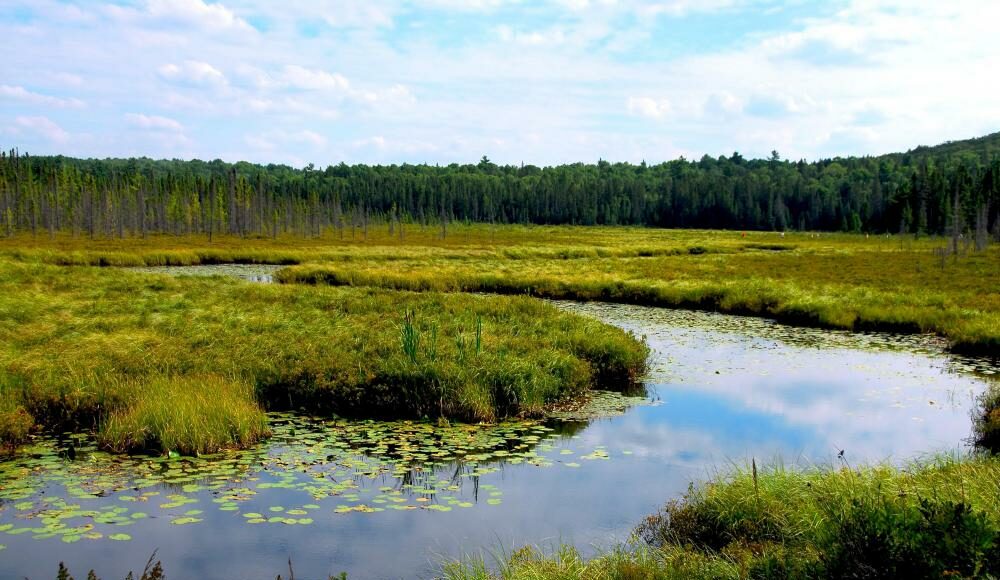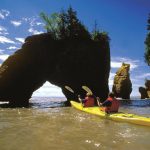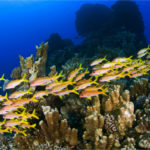Wetland Biomes are among the most diverse, intriguing, and essential ecosystems in the world. They are home to a great variety of wildlife, including birds, mammals, amphibians, and reptiles. Wetlands also provide vital services for human populations, such as water filtration and flood control. But what makes wetlands unique? Where can we find them? In this blog post, we will explore the geographic distribution of wetlands and their classification by Wetlands Biome type. Additionally, we’ll take a look at how climate change is impacting these delicate ecosystems. Read on to learn more!
What is a Wetland Biome?
A wetland is a land area that is saturated with water, either permanently or seasonally. Wetlands are home to a variety of plant and animal life, and they play an important role in the global ecosystem.
There are three main types of wetlands: marshes, swamps, and bogs. Marshes are wet areas that are usually teeming with life, including insects, amphibians, reptiles, fish, birds, and mammals. Swamps are similar to marshes, but they tend to be more forested and have more standing water. Bogs are wet areas that are dominated by mosses and other acidic plants.
Wetlands can be found on every continent except Antarctica. They play a vital role in the global ecosystem by providing a habitat for wildlife, purifying water, and absorbing excess nutrients and carbon dioxide from the atmosphere.
The Different Types of Wetland Biomes
There are many different types of Wetland Biomes, each with their own unique characteristics. The most common type of wetland is the freshwater swamp, which is found in areas with high rainfall and poor drainage. Swamps are usually made up of trees and shrubs and are home to many different kinds of animals.
Another common type of wetland is the marsh. Marshes are similar to swamps but usually found in areas with less rainfall and better drainage. Marshes are often home to reeds and other plants that can tolerate wet conditions.
Fens are another type of wetland that is found in cooler climates. Fens are characterized by their acidic water and their spongy peat soils. Fens are home to many different kinds of mosses and liverworts.
Bogs are another type of wetland that is found in cool climates. Bogs get their water from rain or melting snow, and they have very acidic water as a result. Bogs are home to many different kinds of mosses, lichens, and pitcher plants.
Where are Wetland Biomes Found?
There are Wetland Biomes all over the world. In North America, they are found in every state except for Alaska. The largest concentration of wetlands is in the Midwest, specifically in the Prairie Pothole Region. This region includes parts of North Dakota, South Dakota, Minnesota, Iowa, and Montana. Other notable wetland areas in North America include the Everglades in Florida and Great Lakes region.
Wetland Biomes are also found throughout Europe, Asia, Africa, Australasia, and South America. In Europe, they are particularly common in the United Kingdom, Ireland, Denmark, Sweden, and Poland. In Asia, they can be found in China, Japan, India, and Russia. In Africa, they are located in countries such as Nigeria, Tanzania, and Madagascar. Finally, Australasia’s wetlands are found in Australia and New Zealand.
The Geographic Distribution of Wetland Biomes
There are Wetland Biomes all over the world. In North America, there are many in Canada, the United States, and Mexico. There are also wetlands in Europe, Asia, Africa, Australia, and South America. Each wetland has its own unique climate and vegetation.
In the United States, Wetland Biomes can be found in every state. The largest concentration of wetlands is in the southeastern coastal plain region, which includes Florida, Georgia, and South Carolina. The Great Lakes region also has a large number of wetlands. Other regions with significant wetland ecosystems include the mid-Atlantic states, the Chesapeake Bay area, and New England states.
In Canada, Wetland Biomes are located in every province and territory but are especially prevalent in British Columbia, Alberta, Saskatchewan, Manitoba, Ontario, Quebec, and Newfoundland & Labrador. In Mexico, most wetlands are concentrated in the Yucatan Peninsula and along the Gulf Coast.
The distribution of wetland ecosystems worldwide is strongly influenced by climate patterns and local geography. Wetland Biomes tend to form wherever there is sufficient moisture for their growth such as in areas with high rainfall or near bodies of water. Additionally, land use practices such as farming and urban development can have an impact on the spread of wetlands since they can both create new wetland habitats or destroy existing ones.
Pros and Cons of Wetland Biomes
Wetland Biomes are areas of land that are saturated with water, either permanently or seasonally. They support a unique community of plants and animals that have adapted to live in these conditions.
Wetlands can be found all over the world, but they are especially common in tropical and subtropical regions. There are three main types of Wetland Biomes: freshwater, saltwater, and brackish. Each type has its own set of characteristics plants and animals.
Freshwater wetlands include marshes, swamps, and bogs. These Wetland Biomes are home to many species of fish, amphibians, reptiles, birds, and mammals. Some of the most iconic wetland animals include alligators, crocodiles, snakes, turtles, frogs, and toads.
Saltwater wetlands include mangrove forests and salt marshes. These ecosystems are found in coastal areas and are home to many different types of crabs, shrimp, fish, birds, and mammals. One of the most well-known saltwater wetland animals is the American alligator.
Brackish wetlands are a mix of both fresh and salt water. They are found in areas where rivers meet the sea. Brackish Wetland Biomes support a variety of plant and animal life, including fish, crustaceans, mollusks, birds, reptiles, and mammals.
Plants in a Wetland
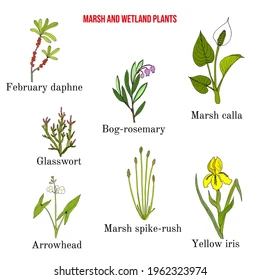
A wetland is a land area that is saturated with water, either permanently or seasonally. Wetland Biomes are habitats for many plants and animals, as well as microorganisms.
There are four main types of Wetland Biomes: marshes, swamps, bogs, and fens. Each type has different plant life.
Marshes: Marshes are wetlands that are flooded with water only during the wet season. The water in a marsh is not deep enough to completely cover the plants. Some common plants that grow in marshes are cattails, rushes, and sedges.
Swamps: Swamps are Wetland Biomes that are flooded with water all year round. The water in a swamp can be up to six feet deep. Some common plants that grow in swamps are cypress trees, mangrove trees, and rosemary.
Bogs: Bogs are Wetland Biomes that have very acidic water and no flowing river or stream. The water in a bog is usually about two to three feet deep. Some common plants that grow in bogs are pitcher plants, sundews, and sphagnum mosses.
Fens: Fens are Wetland Biomes that have neutral or alkaline water and some flowing river or stream. The plants in a fen get nutrients from the water flowing through it instead of from the soil. Some common plants that grow in fens are reeds, grasses, and sedges.
An Invasive Wetland Plant: Hydrilla
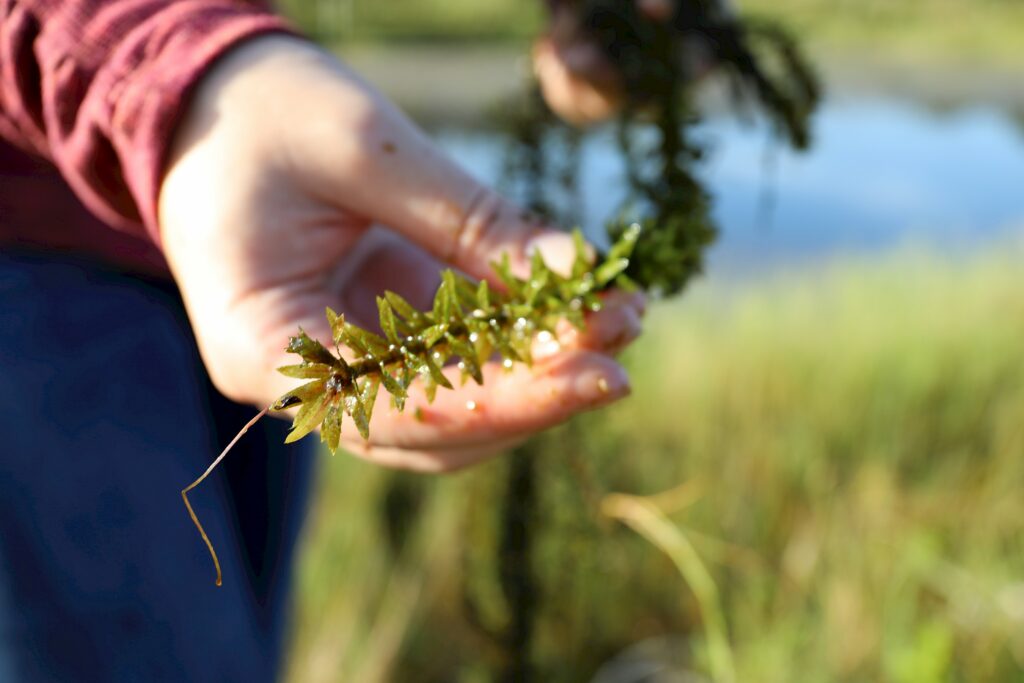
Hydrilla (Hydrilla verticillata) is an aquatic weed that is native to Asia. It was introduced into Florida in the 1950s and has since spread to other states in the southeastern United States. Hydrilla grows rapidly and can form dense mats of vegetation that can impede water flow and block sunlight from reaching submerged plants. This plant can also reduce the oxygen levels in water bodies and serve as a host for harmful bacteria and parasites.
How can you help Save Wetland Biomes?
There are many ways that you can help save Wetland Biomes. One way is to support organizations that are working to protect and restore them. You can also take action in your own community to help protect wetlands. Here are some ideas:
- Educate yourself and others about the importance of wetlands and the threats they face.
- Support wetland conservation and restoration projects in your community.
- Advocate for strong policies to protect Wetland Biomes at the local, state, and federal levels.
- Reduce your own impact on wetlands by limiting your use of pesticides and fertilizers, properly disposing of waste, and avoiding activities that could damage wetland habitats.
Some Questions and Answers (Wetland Biomes)
What is the Climate like in Wetland Biomes?
The climate of wetlands varies greatly depending on the type of wetland, but in general, they are warm and humid. Wetlands typically experience mild temperatures throughout the year, with a range from an average low of 32°F (0°C) in winter to an average high of 86°F (30°C) in summer. Precipitation is quite frequent as well; most Wetland Biomes receive over 50 inches (1,270 mm) of rain annually. The humidity is usually high due to the moisture-laden air near water sources such as ponds or lakes.
How do Wetlands Biome Form?
Wetlands Biome forms when waterlogged soils prevent water from draining properly. This can happen for a variety of reasons, including changes in climate (such as an increase in rainfall), topography (such as a rise in sea level), or human activity (such as damming a river).
What is the Geographic Distribution of Wetland Biomes?
The geographic distribution of Wetland Biomes varies depending on the type of wetland. For example, marshes are often found near coasts where they are flooded by salt water from the ocean. Bogs tend to form in cold regions with high rainfall, such as northern Europe and Canada. Swamps usually occur in warm climates with high rainfall, such as the southern United States and parts of Africa.
What are Wetland Biomes?
Wetlands are areas where water covers the soil or is present at or near the surface of the land. Many types of wetlands exist, including swamps, marshes, bogs, and fens. Each type has different characteristics, but all Wetland Biomes share certain similarities.
Wetland Biomes occur naturally on every continent except Antarctica. They can be found in a variety of climates, from cold tundra to hot tropical areas. However, wetlands are most common in temperate zones.
Conclusion
In conclusion, Wetland Biomes are an important biome that can be found all around the world. They provide a home for countless species of animals, plants, and other organisms and play a crucial role in maintaining the balance of nature. The geographic distribution of wetlands varies greatly due to human activities such as farming, development, and pollution but they remain essential to life on earth no matter where they may be located. We must protect these vital habitats so that their invaluable contributions will continue well into the future.
Read More: Wetland Biomes: Geographic Distribution Of Wetlands!- The Bay of Fundy Tidal EcozoneThe Fundy tidal ecozone is considered one of the world’s most dynamic bodies of water. This zone experiences significant tidal… Read more: The Bay of Fundy Tidal Ecozone
- How to Get Rid of E-WasteE-waste is becoming an increasing health problem in Africa, China, and other developing areas of the world, and the United… Read more: How to Get Rid of E-Waste
- July’s Earth Temperature Highest In 136 Years: NASALast month’s temperature reached to record-breaking highest point in 136 years, reveals NASA data. Director of NASA’s Goddard Institute for… Read more: July’s Earth Temperature Highest In 136 Years: NASA
- China Launches World’s First Quantum-Enabled Satellite MiciusFor the first time quantum-enabled satellite has been launched in the world and China has done it today blasting off… Read more: China Launches World’s First Quantum-Enabled Satellite Micius
- Fish Urine Benefits In The Growth Of Coral Reefs: StudyThe urine of fishes is like paying back to the ecosystem for the shelter and protection offered in coral reefs… Read more: Fish Urine Benefits In The Growth Of Coral Reefs: Study






